Theodore Roosevelt’s Elkhorn Ranch
3 Comments
Theodore Roosevelt National Park is unique amongst the 59 National Parks in that it protects not only an exceptional landscape, but also the memory of an exceptional man, the president who did far more for the National Parks and environmental conservation in the US than any other. This summer, I finally visited the place most closely associated with him in the park, the remote and solitary Elkhorn Ranch.
The son of a prominent New York family, Roosevelt first came to the western North Dakota Badlands in 1883, aged 24, to shoot one of the area’s few remaining buffalo. However, he fell in love with the rugged land and lifestyle. Back to New York, his wife and his mother both died on Valentine day of 1884. In June, he returned to the Dakota Territory to grieve. There, he built the character that allowed him to go on to greatness while living the life of a cattle rancher and hunter. The restorative power of wilderness inspired him for his crusade to save wild and special places in the United States.
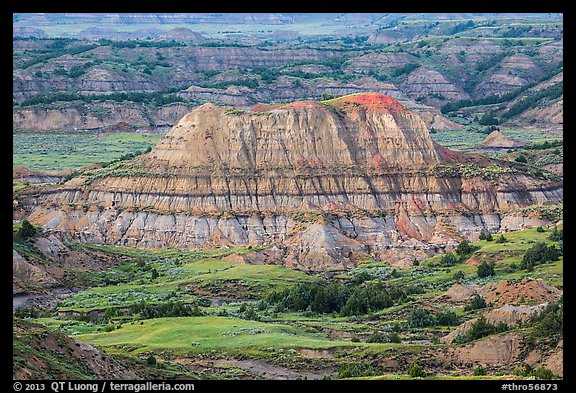
Theodore Roosevelt National Park comprises three separate units. Most visitation occurs in the larger South Unit (photo above) easily accessed from I-94 through touristic Medora. It has a scenic loop drive and the more extensive trail system. The smaller North Unit is much more quiet – in a park which is already amongst the lesser visited. I remember the skies there being pretty dark 10 years ago, but when I returned this summer, as I set out for some night photography, I was surprised by the light pollution (photo below).
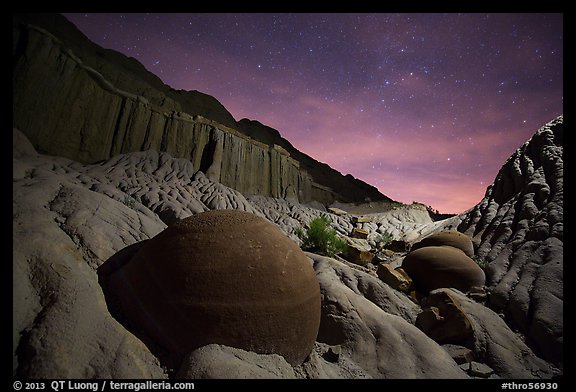
During my two previous visits to the park, I had missed the Elkhorn Ranch Unit. I had been told that it is just 218 acres, and accessible only by 30 miles of remote 4WD roads, so I did not attempt to get there with my rented passenger car. In the meanwhile, I had read extensively about environmental conservation in the US and the history of the national parks, so my admiration of Theodore Roosevelt had only grown. Because this is Roosevelts home in North Dakota, I could understand why despite its tiny size it is considered to be the crown jewel of Theodore Roosevelt National Park. This time equipped with a SUV, I resolved to visit the Elkhorn Ranch.
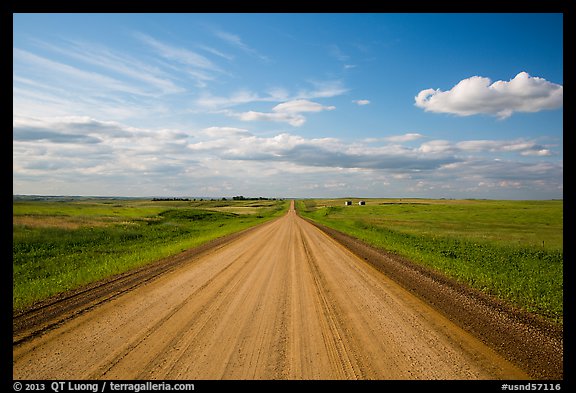
The excellent map provided by the NPS in the Theodore Roosevelt National Park newspaper made is easy to navigate the maze of unpaved roads. If you go there, be sure to obtain it at the South Unit Visitor Center, since the roads are scantly marked, and there is no signage pointing to the Elkhorn Ranch. In dry weather, they did not present difficulties, and in fact did not require 4WD, but I could see them easily becoming too muddy to be passable after rains.
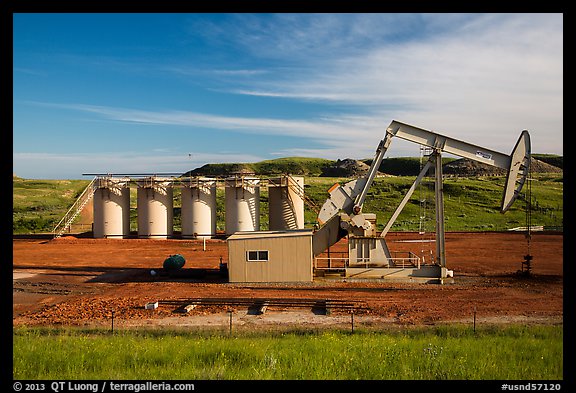
Although I met only a few oil trucks, I noticed quite a few oil wells. Starting with the discovery of the Parshall Oil Field in 2006, the Bakken oil boom has propelled North Dakota to become the number two oil-producing state in the country (just behind Texas), and the state with the lowest unemployment rate, helping the US get to the brink of overtaking Russia as the world’s largest producer of oil and gas combined. The boom brought about a wholesale industrialization of the western North Dakota countryside, resulting in the light pollution that I had noticed in the North Unit.
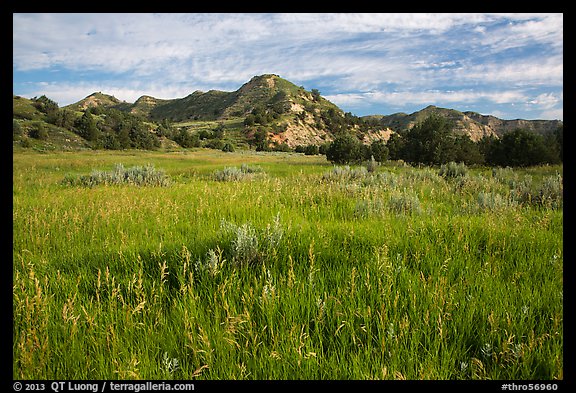
Arriving in late afternoon at the Elkhorn Ranch site, I did not see any other visitor there. By the time I left, the next mid-morning, no other visitor had arrived. Where else can you experience an entire National Park Unit by yourself for that amount of time ? The solitude could have been as extreme as during the times of Theodore Roosevelt. In 1884, he had came back to the Dakota Territory looking for a new ranch site. After riding 30 miles up the Little Missouri River, he found this site he liked, because of the isolation: “My home ranch lies on both sides of the Little Missouri, the nearest ranch man above me being about twelve, and the nearest below me about ten, miles distant”. He named this ranch – his second one – the Elkhorn after he found the horns of two male elk interlocked at the site. The elk had been butting heads when their horns became locked. Unable to extricate themselves, they died of starvation.
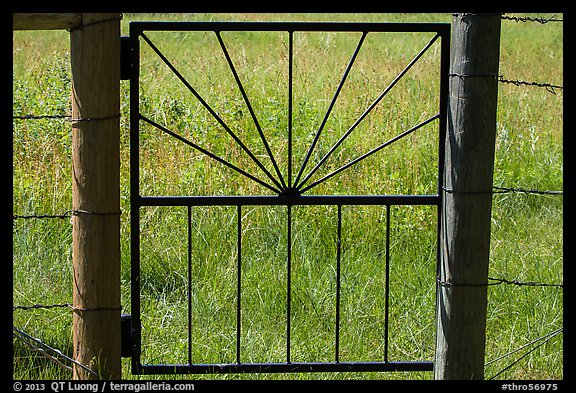
I parked outside the fence, and opened the distinctive gate. The grassy trail consisted only of a band of shorter grass delimited by taller grass. Wonderfully soft under the feet, like a natural carpet, it contributed to the perception that although man had been there, the landscape had minimal development, remaining the way it was, when Roosevelt first found it.
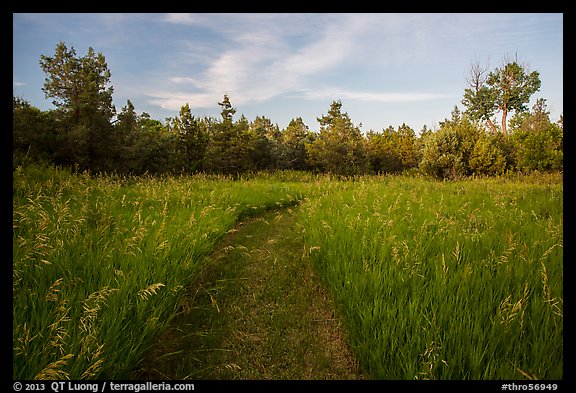
After about half a mile, the trail forked. The right branch went to the Little Missouri River, whereas the left branch led to the ranch site itself, enclosed behind another fence. All that was left are massive foundation stones. Tracing the boundaries of his ranch house, I took in the starkly beautiful view I imagine Roosevelt had from the ranch’s broad veranda. I could immediately feel why he enjoyed it so much. Although both the South Unit and North Unit have more spectacular views or interesting rock formations, there was another kind of more intimate beauty on display here.
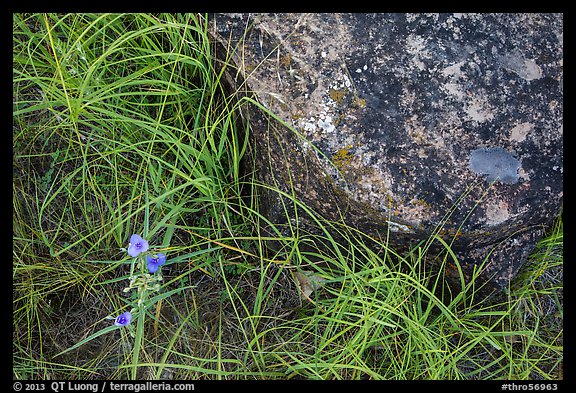
The large cottonwoods – some of which date from Roosevelt’s time – and meadows lining the Little Missouri created a sense of serenity amongst the rugged badlands. This was the most inviting and peaceful site I had seen, through the more than thousand miles I had driven in a week, from Rocky Mountain National Park, through the Badlands and Black Hills of South Dakota. For the first time on the trip, where as usual I was trying to do too much, I relaxed and just laid in the grass, listening at the cottonwood leaves quake in the wind and the birds sing.
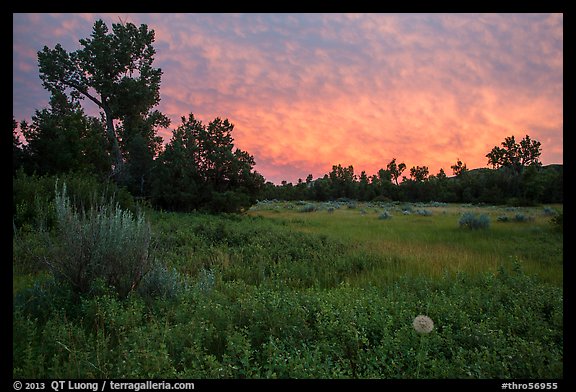
In the late 19th century, Roosevelt witnessed from there the environmental degradation in the Badlands wrought by overgrazing and overhunting, an experience that led directly to the development of his influential conservation beliefs. The idea of the national government taking an active role in the conservation of America’s natural resources has roots in Roosevelt’s experiences at the Elkhorn Ranch. For this reason, the place has been called “cradle of American conservation” and considered by many as a hallowed shrine. I wondered, if Roosevelt was returning today, what would he have thought of the distant rumble of pump jacks that can be heard from the ranch site, which can only increase as the oil boom continues ? For now, the view remains the same as Roosevelt saw it, but for how long ?
View more images of Theodore Roosevelt National Park
View more images of the Elkhorn Ranch Unit


Thanks very much QT for a great piece here – the writing and photos. I really want to go visit this now.
Thanks Paul. I believe that the site as we know it is seriously threatened by encroachment. I encourage everybody to visit the Elkhorn Ranch so that they can experience for themselves – in its still largely pristine condition – why it is so beautiful and so important to protect.
There is also a currently a petition to protect the Theodore Roosevelt NP and specifically Elkhorn Ranch from fracking: https://www.change.org/petitions/secretary-of-the-interior-sally-jewell-protect-theodore-roosevelt-national-park-and-the-elkhorn-ranch
Great work QT. Your images from TRNP make me want to visit.